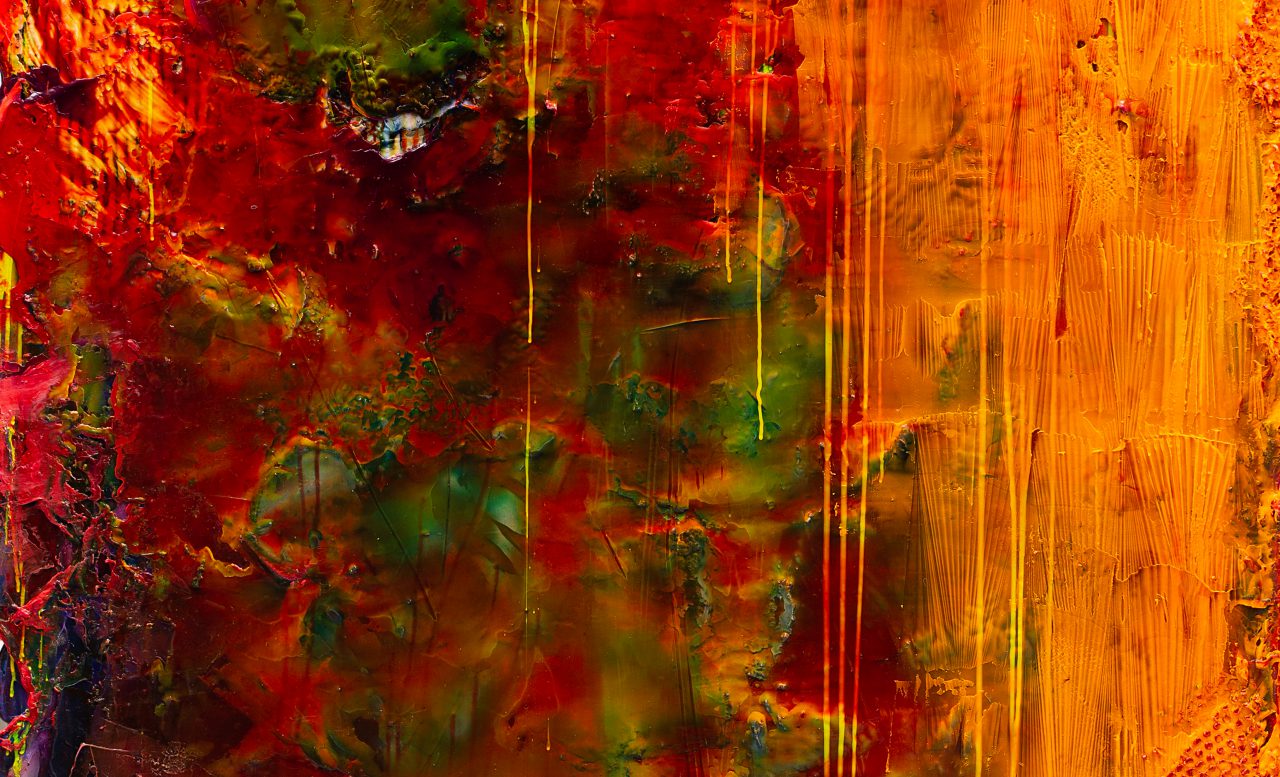
MORITZ SCHLEIME
...Page is loading...

Alissa Maxman
Berlin, Germany
– by Heinz Stahlhut
“Go ahead and do it!” “Yes, but what if someone looks? Surely it isn't allowed?” “If you don't dare do it, then I will!”
This fictional dialogue between two visitors at an exhibition with paintings by the young artist Lev Khesin could certainly occur in this form or something very like it. It is all too tempting to touch the still damp- and soft-looking surface of his...
– by Heinz Stahlhut
“Go ahead and do it!” “Yes, but what if someone looks? Surely it isn't allowed?” “If you don't dare do it, then I will!”
This fictional dialogue between two visitors at an exhibition with paintings by the young artist Lev Khesin could certainly occur in this form or something very like it. It is all too tempting to touch the still damp- and soft-looking surface of his paintings, on which the paint is often smoothed out in viscous streaks. They give the impression the surface could be reshaped by a slight touch of the fingertips, if only touching works of art were not taboo. Anyone who did it anyway would be in for a surprising sensation: the surface that looks so fluid and malleable does give way easily to pressure, but it is completely resistant to any attempt to re-form it. Lev Khesin painted these works not with oil paint but with silicone. Several reasons can be given for the choice of this material, which until now has been unusual for paintings.
First, by choosing silicone Khesin puts himself in the modernist tradition whose representatives responded to the call to be contemporary by using materials for painting and sculpture that had previously been unusual. But this raises the question whether this approach, which has almost become classic in the meanwhile, is not already a little outdated for an artist of Khesin’s generation. It seems more plausible to seek the inspiration for the use of this soft- and smeary-looking material in the later era of Pop Art and beyond. For Pop Art was the first to experiment extensively with motifs and materials that broke even more rigorously with the canon of high art and – like James Rosenquist’s monumental heaps of spaghetti or Cindy Sherman’s photographs of vomit, Piero Manzoni’s artist’s shit or the (supposed) excrement in Paul McCarthy’s performances – certainly overstepped the bounds of “good taste.” This aspect of revulsion and trash, which in his more recent works Khesin consciously exploits by introducing flitter and glimmer, is taken even further in compositions like Nihilartikel of 2006 or even more explicitly in Ponask of 2008. For in those works in particular, the silicone in Khesin’s paintings recalls, in its soft materiality and murky transparency, Vaseline, which is used to excess in Matthew Barney’s films and installations, in which it also alludes directly to the physical, to decay and dissolution.
Color as Light
Nevertheless, that does not yet adequately explain the use of silicone; rather, in retrospect it seems only logical in formal terms as well. In various photographs by Khesin – who studied primarily under Frank Badur and thus is very familiar with the essential approach to color – the motif of the reflection of colored light on wet streets at night testifies to his particular interest in the interaction of color and light, darkness and reflection. Khesin’s early paintings show that he tried to achieve these phenomena through the use of oil paint but evidently could not do so to his satisfaction.
However, the use of silicone – into whose transparent mass the pigment is partially mixed before painting and partially spread onto it while painting – causes color and light to permeate each other. In compositions like Per Proc. of 2006 or Subfusc of 2008, it is not just that the various layers of paint are superimposed semitransparently, so that, when looking frontally at the painted surface, they appear to be color fields whose boundaries can never really be made out, and only the edges of the pictorial objects – which, as a result of the thick board used as a foundation, stand quite far from the wall – reveal the reservoir that has gathered there from the application of the paint and in which the various layers of paint can be read as if in a pictorial history. Moreover, the light can penetrate the transparent layers and cause the lower regions to glow.
Combining color and light is something that has been a goal in painting for more than a century, in movements such as Pointilism, Fauvism, and Expressionism or in Mark Rothko’s color field painting. But there the luminousness of the color is usually achieved by contrasts, or the materiality of the paint is deliberately suppressed so that it can be transcended to become a pure phenomenon of light.
Khesin, by contrast, seems just as fascinated by the viscous mass of his paint, which he not only applies with palette knives and squeegees but also shapes using other instruments. Chance plays an important role in this process. For when, in the aforementioned paintings like Ponask or Nihilartikel, he applies the paint to the base through perforated sheet metal or presses the metal onto already applied paint, the resulting form can – despite the regular pattern of holes – be only partially controlled.
Paint as Material
This contrast between the strict form of the regular grid and the nonform of the soft- and fluid-looking paint, which – like the vibration produced by the especially tight grid and the consciously employed random processes in the creation of the picture* – is evidence of a closeness to early works by the ZERO group and is made evident above by the paint as three-dimensional material.
In this context, Lev Khesin has identified Robert Ryman, who distinguished precisely between color and paint, as a role model. For Ryman, the word color referred to the visual appearance, while the word paint meant the three-dimensional material – a distinction that Khesin directly takes up. In his paintings, he combines these two meanings, and thus bridges a contradiction that seems insuperable: the intangibility of colored light is equal in importance to the materiality of the paint. It seems almost as if Khesin goes beyond Ryman, for whom the mostly white monochromy of his paintings was not metaphysically charged – as it was, for example, for ZERO – but instead intended to demonstrate primarily that the paint was neutral with respect to content.
In Khesin’s art, the wiping of the paint sometimes produces forms that hang down like sacks, as in Icasm of 2007, which makes the heaviness of the material seem almost tangible. This addresses the sense of vision and sense of touch equally, though at least since the Enlightenment the two have represented a clear antithesis in the Western understanding. Vision is understood to be the distancing, “pure,” and intellectual form of perception, to which the “contaminating” perception via contact is opposed and subordinated – a contrast that can be traced in the dispute over representational depiction and abstraction, which is overcome in Khesin’s art.
The many connotations that dovetail in Lev Khesin’s paintings of recent years demonstrate that his choice of material reveals a hand as fortunate as it is experienced.
*In addition to his paintings, Khesin has repeatedly done drawings with a machine he constructed himself, which puts a clear distance between the author and the work.
This can possibly be seen as revealing more a proximity to his parents’ production of icons than a metaphysical charge, of whatever nature, that can be found in abstract paintings. For even the icon is, given its basis in legend, an image that is not created by the human hand.
2019
Luce e Materia / Artea, Milan, Italy
Inner Forest / Westend Artspace / Melbourne, Australia
2018
in focus // out of focus / Galerie SMUDAJESCHECK / Munich, Germany
show all
2019
Sam Grigorian, Helmut Zielke, Lev Khesin / LÄKEMÄKER / Ostseebad Wustrow, Germany
Roter Kunstsalon / Museum Villa Rot, Galerie SMUDAJESCHECK / Munich, Germany
Nachts alleine im Atelier / Evelyn Drewes | Galerie / Hamburg, Germany
show all
Till Richter Museum Schloss Buggenhagen, Buggenhagen, Germany
2002-2008 Universität der Künste, Berlin, Germany
2005 Carnegie Mellon University, Pittsburgh, PA, USA